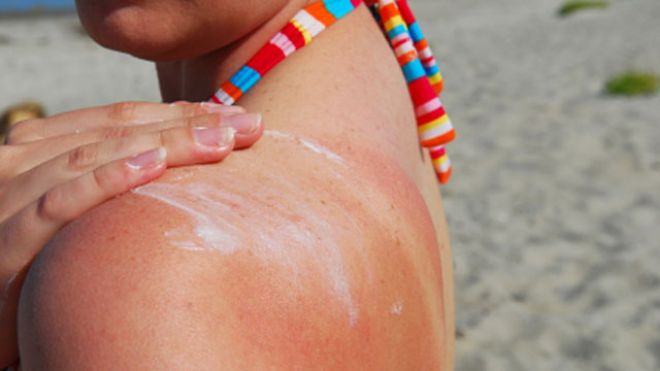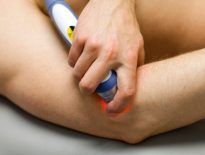A healthy glow is often a sign of a good time. A sunburn is often a sign of a good time gone awry. Stinging, red, peeling skin isn’t anyone’s idea of fun, but with summer approaching, sunburn season is right around the corner. Let’s take a look at how sunburns happen.
The Sun
The origin of your sunburn woes, the sun constantly emits a steady stream of radiation, particularly ultraviolet. Ultraviolet radiation is just a wavelength short of appearing in visible light and lies between 10 and 400 nanometers. The electromagnetic waves of UV appear in frequencies higher than what we identify as the color violet.
UV appears in several forms. UVA rays are the most prominent and can actually damage your DNA if you’re exposed for long periods of time. An 8-OHdG ELISA can detect DNA damage. The main form of ultraviolet you have to worry about—as far as sunburns are concerned—are UVB rays.
The Sunburn
Life science technology shows that sunburns are actually your body’s way of warning you that you may be getting too much sun, just like feeling a little tipsy as you sip your margarita by the pool is your body’s way of telling you you’re ingesting poison.
When your skin is exposed to UVB radiation, a form of RNA known as micro-RNA draws damage. RNA plays about as important a role as DNA, responsible for coding, decoding, regulating, and expressing genes. You may not realize the damage, but your body does and releases the damaged RNA to signal solar injury.
The signal tells neighboring, undamaged cells to stimulate the various factors that promote inflammation. Your capillaries dilate, leading to a characteristic reddish glow. Mast cells, which are the cells in several types of tissue best known for their role in allergies and anaphylaxis, release chemicals into the body. These chemicals, which include histamine and serotonin, trigger inflammation and the release of more chemicals. The inflammation is what turns your skin bright red and causes the pain even after you’re out of the sun.
The process is actually a means of removing sun-damaged cells. Not clearing away the sun-damaged cells could lead to cancer.
Preventing the Burn
Your skin actually does try to fight back on its own. As soon as your cells are exposed to UV radiation, melanocytes release melanin pigment into your skin. Aside from providing the basis for your tan, melanin dissipates over 99.9 percent of absorbed UV radiation as heat. But remember that UV light damages DNA, enough to potentially cause melanoma, a type of cancer involving malignant tumors of melanocytes.
Don’t rely on melanin alone to protect you from sunburns. The best defense is sunscreen. Studies show that topical antioxidants, like superoxide dismutase, aren’t as practical or effective as normal sunscreen for daily photo protection. What ever sunscreen you use, find one that blocks UVA and UVB radiation, and reapply every few hours.
Fun in the sun doesn’t always mean you need to get burned or deal with peeling skin, so don’t be shy with the sunscreen.






